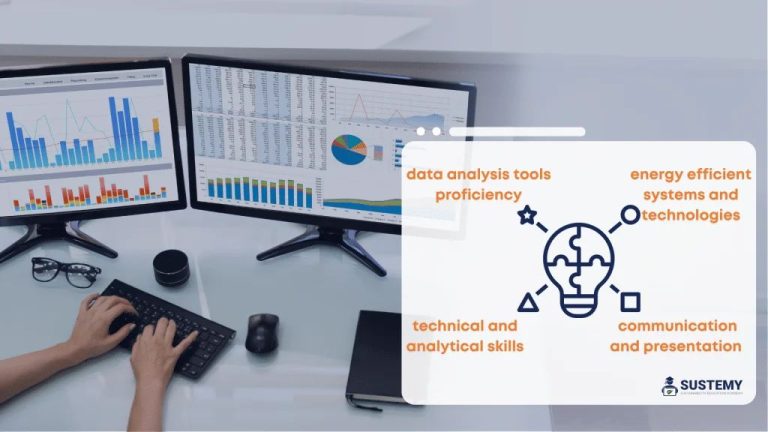What Is Form 8908 Used For?
What is IRS Form 8908?
IRS Form 8908 is used to report nondeductible contributions made to a traditional IRA. These contributions are made with post-tax dollars, meaning you don’t receive a tax deduction for making the contribution (Source: https://www.irs.gov/forms-pubs/about-form-8908). Reporting nondeductible contributions allows you to have a portion of IRA distributions be nontaxable in the future.
Specifically, Form 8908 tracks the amount of nondeductible contributions made to all of your traditional IRAs for the year. This includes contributions made to IRAs held at different institutions. The total nondeductible contribution amount for the year is then used to calculate the nontaxable portion of any future traditional IRA distributions (Source: https://www.irs.gov/pub/irs-pdf/i8908.pdf).
In summary, the main purpose of Form 8908 is to report nondeductible traditional IRA contributions so that taxpayers can have a portion of future IRA distributions be nontaxable.
When to File Form 8908
Form 8908 must be filed each tax year that you make a nondeductible contribution to a traditional individual retirement arrangement (IRA). The IRS requires individuals to file Form 8908 by the due date of their tax return, including extensions. According to the Instructions for Form 8908, this form helps track the basis in your IRAs when you calculate the taxable portion of your IRA distributions. Without filing Form 8908 for the year, the IRS assumes your IRA contributions for that year were deductible.
Specifically, Form 8908 should be filed if you make nondeductible contributions to any of the following types of IRAs:
- Traditional IRAs
- SEP IRAs
- SIMPLE IRAs (after the 2-year period when you could not withdraw without penalty)
You do not need to file Form 8908 if you make deductible IRA contributions or contribute only to Roth IRAs, since contributions to Roth IRAs are not deductible. The IRS uses Form 8908 to ensure you don’t take deductions for both nondeductible traditional IRA contributions and contributions to a Roth IRA.
How to Fill Out Form 8908
To fill out Form 8908, follow these steps:
-
In Part I, enter your personal information such as your name, address, and Social Security Number.
-
In Part II, enter information about your nondeductible IRA contributions for the tax year. According to the IRS, this includes:
- The total amount contributed for the year to your traditional IRAs
- Your basis in traditional IRAs
- Your deductible contributions for the year
- Your nondeductible contributions for the year
-
Complete any other required information like your signature and date.
It’s important to accurately report your nondeductible contributions on Form 8908 each year. Otherwise you may end up paying taxes on distributions that should be tax-free. Keep a copy for your records.
Reporting Nondeductible Contributions
Form 8908 is used to report any nondeductible contributions you made to a traditional IRA for a given tax year. Nondeductible contributions are amounts you contribute to your IRA that you cannot claim as a tax deduction. According to the IRS instructions for Form 8908, when you file the form you must:
- Report the total nondeductible contributions you made for that tax year.
- Also report any withdrawals taken from your IRA that year.
- Your cost basis, which tracks your nondeductible contributions, is calculated on Form 8606.
Essentially, Form 8908 exists to track your nondeductible IRA contributions so that only the deductible portion of future withdrawals will be taxed. As explained in the TurboTax article What is IRS Form 8606: Nondeductible IRAs, you must file Form 8908 each year you make a nondeductible IRA contribution, otherwise the IRS assumes your contributions were deductible.
Distributions from IRAs with Nondeductible Contributions
When you take a distribution from a traditional IRA that contains both deductible and nondeductible contributions, the distribution is only partially taxable. The portion that represents a return of your nondeductible contributions is not taxed. The remainder, representing deductible contributions and earnings, is taxable income.
To determine the taxable portion, you must calculate the cost basis percentage of your IRA. This is based on the total nondeductible contributions to all of your traditional IRAs divided by the total balance of all your IRAs. Multiply the cost basis percentage by the amount of the distribution to find the nontaxable amount (Investopedia).
For example, if you have made $50,000 in nondeductible contributions over the years and your total IRA balances equal $500,000, your cost basis percentage is 10% ($50,000/$500,000). If you take a $20,000 distribution, $2,000 (10% of $20,000) would be nontaxable and $18,000 would be taxable.
It’s important to keep track of nondeductible contributions and account balances every year using Form 8606. Otherwise, you may end up paying more tax than necessary on IRA withdrawals.
Failure to File Form 8908
If you don’t file Form 8908, the IRS assumes all contributions to traditional IRAs are deductible. This means your withdrawals would be fully taxable instead of partially nontaxable. According to the IRS, “If you fail to file Form 8908 and you have a nondeductible IRA contribution, the amount distributed in a later year will be fully includible in your gross income and, if you took an IRA deduction in the year of the contribution, the distribution would also be subject to the 10% additional tax on early distributions” [1].
The IRS could potentially charge penalties for failure to file Form 8908 under Internal Revenue Code section 6651(a)(1) [2]. This penalty is calculated as 5% of the unpaid tax for each month or part of a month the return is late, up to a maximum of 25% [2]. In order to avoid penalties, you would need to show reasonable cause for failure to file [2].
The key point is that failure to file Form 8908 can lead to paying more taxes on IRA withdrawals than you should owe. It’s important to properly track and report nondeductible contributions on Form 8908 when required.
Form 8606: Tracking Nondeductible IRA Contributions
IRS Form 8606 is used to track nondeductible contributions made to traditional IRAs. Nondeductible contributions are after-tax dollars that are contributed to a traditional IRA, meaning you don’t receive a tax deduction for making the contribution.
According to the IRS instructions for Form 8606, “The purpose of Form 8606 is to report:
- Nondeductible contributions made to traditional IRAs;
- Distributions from traditional, SEP, or SIMPLE IRAs, if you have ever made nondeductible contributions to traditional IRAs;
- Conversions from traditional, SEP, or SIMPLE IRAs to Roth IRAs; and
- Distributions from a Roth IRA if you have ever made nonqualified distributions from Roth IRAs.”
Form 8606 must be filed each year you make nondeductible contributions to a traditional IRA in order to track your cost basis. This allows the IRS to determine the nontaxable portion of any future IRA distributions (source: IRS About Form 8606). Without filing Form 8606, the IRS assumes your contributions were deductible, and distributions would be fully taxable.
When is Form 8908 Required?
You must file Form 8908 if you make nondeductible contributions to a traditional IRA in any tax year. Nondeductible contributions refer to after-tax contributions that you make to a traditional IRA, where you do not take a tax deduction for the contribution. The IRS requires Form 8908 to track your nondeductible contributions so it knows how much to tax when you later take distributions.1
Form 8908 is also required if you took distributions from your IRA and you had a cost basis in your IRAs. The cost basis includes nondeductible contributions you previously made. Form 8908 tracks your remaining cost basis so the IRS knows how much of your future distributions to exclude from taxable income.2
Special Situations
Certain situations involving individual retirement accounts (IRAs) can impact Form 8908 reporting requirements. This includes rollovers, conversions, transfers, and recharacterizations of IRAs.
When you do a rollover from a traditional IRA to a Roth IRA, you must report the amount converted or rolled over as a distribution on Form 8606 (https://www.irs.gov/forms-pubs/about-form-8606). This amount is also reported on Form 8908 since it represents basis in the Roth IRA that is not taxable upon distribution. Failure to file Form 8908 means you may be taxed twice on the same dollars if you don’t have proper records of your basis.
If you transfer or rollover funds between IRAs of the same type, such as traditional to traditional, the basis carries over and it does not impact Form 8908 reporting. However, if you move funds from a traditional IRA with basis to a Roth IRA, that basis must be tracked on Form 8908.
Recharacterizations reverse a conversion or rollover between IRA types. This can also affect basis tracking and Form 8908. For example, if you recharacterize a Roth conversion that was previously reported on Form 8908, you should file an amended Form 8908 reflecting the reversal of the conversion.
In summary, any movement of dollars between traditional and Roth IRAs or conversions between account types need to be reported on Form 8908 to track basis. Failing to file when required can lead to paying taxes twice on the same money.
Conclusion
Form 8908 serves an important purpose in allowing taxpayers to track nondeductible contributions made to traditional IRAs. By filing Form 8908 each year a nondeductible contribution is made, taxpayers ensure they don’t pay more tax than required when making future withdrawals or distributions from their IRAs. The basis tracking provided by Form 8908 allows taxpayers to receive the tax advantages of tax-deferred growth on investments within a traditional IRA, while still being able to withdraw their nondeductible contributions tax-free in the future.
In summary, Form 8908 should be filed by any taxpayer who makes nondeductible contributions to a traditional IRA, in order to properly track their cost basis. Carefully tracking basis is essential to receive the intended tax benefits on future distributions from IRAs with both deductible and nondeductible contributions.





